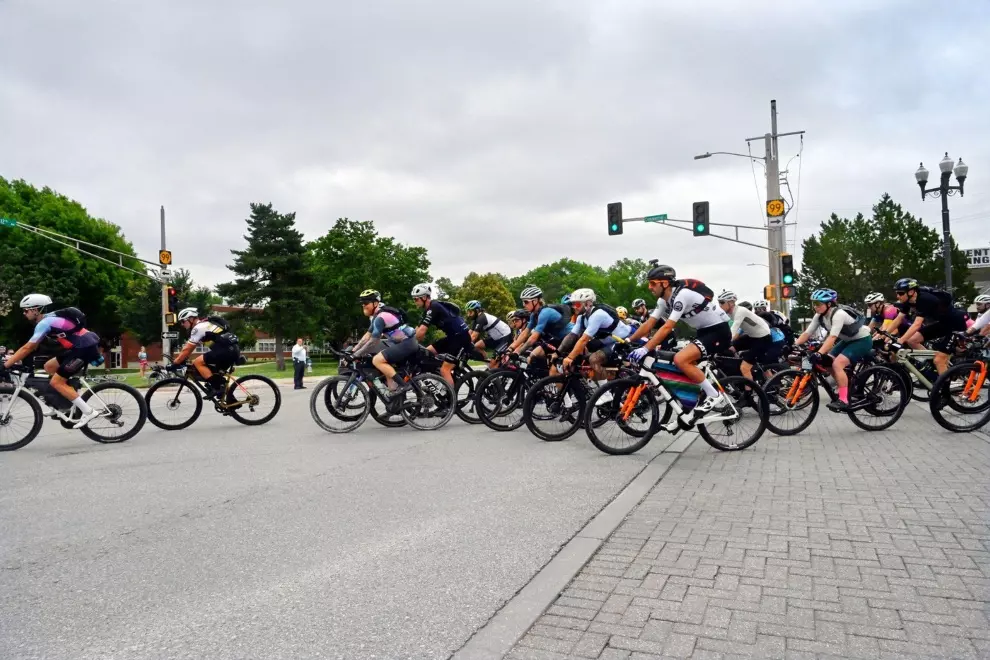“Why volcanoes? I’ve always loved them. I am drawn to their symmetry and the fact that they’re dead and alive at the same time. They’re not like mountains as they’re always changing. They give fertile soil to the people around them but they can kill them too. Inscrutable, sublime, awe-inspiring, both hot and cold. For me, as a biker, they have another advantage – while most other peaks are in national parks, which are protected by law, meaning they’re becoming harder and harder to ride, the volcanic landscape is barren and lifeless, so you cause no damage,” Richard Gasperotti says.
Obviously, he didn’t want to fly halfway across the planet to conquer just one volcano so he put two more on the list: Acatenango and Pacaya. Moreover, the Horsefeathers label promised support and others joined the team: photographer Miloš, cameraman Ladis and manager Jan.
Soon after arrival, the team started to learn more about Guatemala. It is a small country of 17 million people, with inhabitants sharing both the heritage of the indigenous Mayan civilisation and that of the Spanish colonisers. There are humungous mountains, about thirty volcanoes, and sprawling coffee plantations, each most likely belonging to one of the ten wealthiest families in the region. In every village, there is a Catholic church where motifs of pre-Christian décor peek out at you from every corner. Everything is colourful, cheerful, shabby, and laced with electric wires.
There’s coffee roasted the sour way and eggs served for breakfast every morning. The people are friendly but rather shy and taciturn. If they talk, they recollect the Civil War or mention corrupt politicians. The national bird is the vibrant quetzal and because their feathers were used as payment during the Maya civilisation, the Guatemalan people named their currency after them. For quetzals, you can buy beans, the Gallo beer and the Zacapa rum. The Botran rum is much cheaper, though.
Regarding all three volcanoes, the scenario was the same. Each time, the team got as close as possible to the point of ascent in cars and then headed uphill on foot. Experienced guides ensured that everything went smoothly and safely. Everyone carried all the necessities for several days on their own. The order of ascents was determined as follows: first Pacaya (2,552 m), then Acatenango (3,976 m), and lastly Fuego (3,763 m). The goal was always to get as high as conditions allowed and to bike down from the highest point.
“Climbing up brash makes a volcano hike an irritating struggle,” Richard says. “The soil is arid and dead. The only sign of life is the birds, circling high above you, occasionally swooping down to check how much juice is left in your exhausted body. You’re carrying water, food and all your gear, so you’re hauling 30 kilos on your back.”
After reaching the highest point of Pacaya, Richard picked a gravel field with fine dust to become the first person to bike down from there. The descent was a pure four-kilometre MTB ride through volcanic-ash dunes. “It was an ultimate joy worth of the torturous climb,” Richard said.
If experiencing Pacaya and Acatenango was mainly a question of extreme exhaustion on the ascent and immeasurable joy on the descent, in the case of the last volcano, it was about to become one of the riskiest moments of their lives.
In the morning, the Fuego seemed calm, though. Suspiciously calm. Richard went out filming with the boys, the sun was shining in the azure sky, and everyone could hear their footsteps crunching in the volcanic sand while climbing towards the summit. Shielding his eyes from the sun with his hand, Richard was searching for his line. Then it happened. The earth vibrated and all hell broke loose. The explosion ejected a hailstorm of rocks out of the crater and Richard decided not to wait anymore. Glowing boulders blasted up to several hundred metres high and then free-fell to the spot where he was standing just a second ago, trying to choose the direction of what he expected to be the best ride of his life.
“Be it elsewhere or at another time, I would probably freeze – but not here and now. Watching rocks that could kill me instantly, something made me behave differently. It felt as if everything around had slowed down, like a slow-mo clip played frame by frame. With hell itself opening, I found my senses turning sharp. I could hear and see better than ever before. As the black smoke lifted, I could see the photographer running for his life and the cameraman stumbling in the volcanic ash, holding the camera bag above his head. It almost looked funny but even local guides were running and you knew this is not good,” Richard quips.
And then the second eruption came and rocks started raining from the sky like it was doomsday. While nearly saying goodbye to life, Richard jumped on his bike and rode with all his might, breathing in dust, crashing down, picking himself up from the ashes and fleeing away, using all his adrenaline. Only thanks to luck, the whole crew made it safely out of this hell on Earth.
“What was the biggest takeaway? First of all, the joy that we survived. And then there was the experience. When I climbed Acatenango with salty sweat mixed with ash running down my face at nearly 4,000 meters, there was a moment when exhaustion mixed with euphoria and tears welled up. It was me who made it to that point. Six months ago, I decided to come and here I was. That’s the way life goes. When you truly set a goal, there are a thousand ways to get there. The only thing you really need is the destination and the rest will work out.”









